The process of making Dune was pretty novel in terms of creating the imagery. The movie was shot digital (on the ARRI ALEXA LF and Mini LF), then was transferred to 35mm film, and then was scanned back to digital. All that to create the most accurate emulation possible, reducing the digital sharpness, and elevating softness. Read on about this fascinating process.
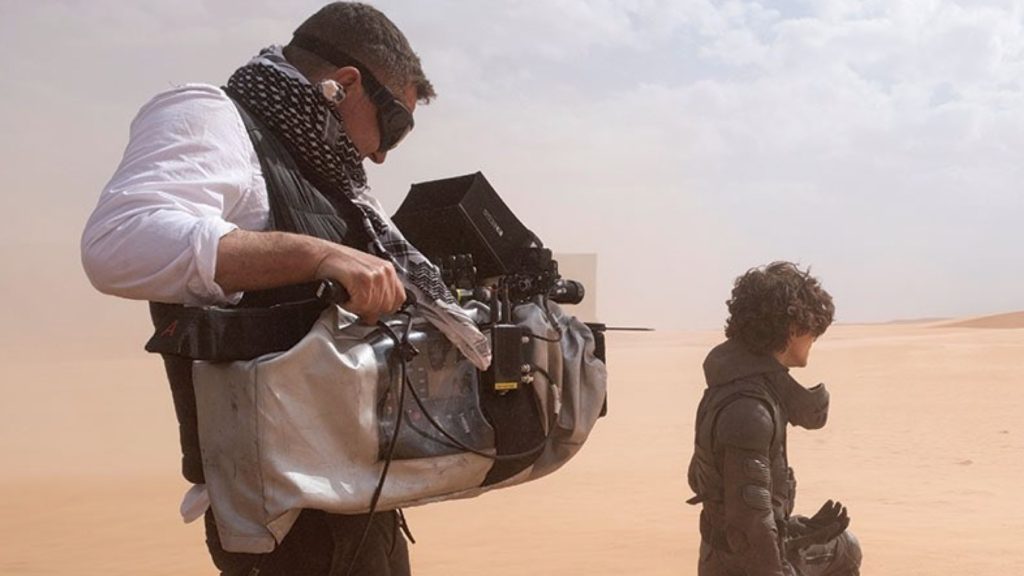
Dune cinematography
Principal photography of Dune began in March 2019. Hence, DP Greig Fraser ASC, ACS, and director Denis Villeneuve used a prototype of the ARRI ALEXA Mini LF camera during the last months of shooting. According to resources, the film was shot for the IMAX format with an IMAX-certified ALEXA LF camera and an IMAX-certified Mini LF (the prototype), equipped with Panavision’s large-format lenses in the Ultra Vista and H-series lineup, with select scenes seeing the aspect ratio opened up to 1.90:1. It’s important to note that back then there were no ‘IMAX-Certified’ cameras, as the ‘Filmed in IMAX’ program was announced later on. Anyway, the film was shot in pure digital format (ARRIRAW).
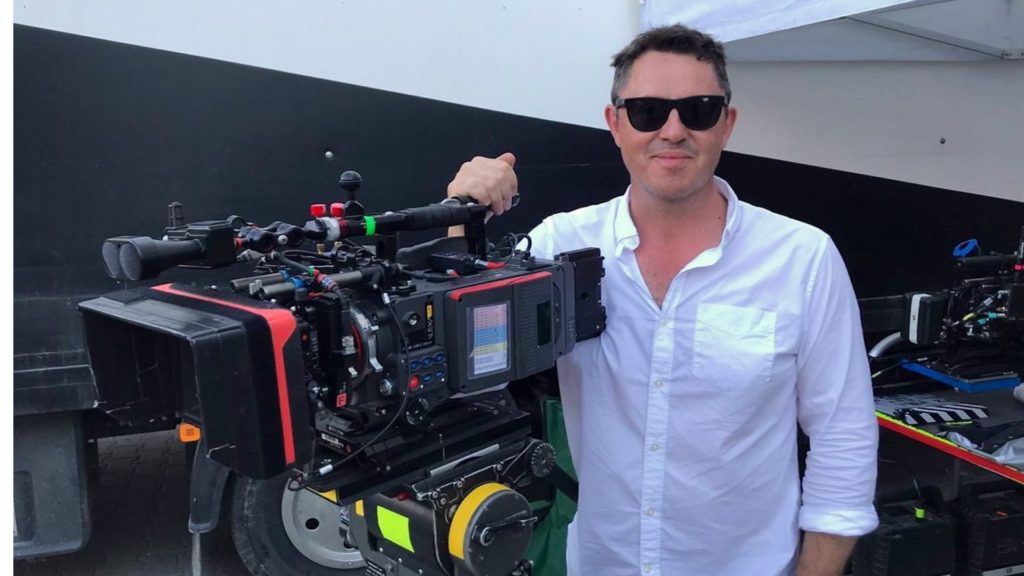
“Digital felt too crisp, and film looked too nostalgic”
For testing, Fraser tried many formats, focusing on film cameras. He shot 65mm, IMAX, 35mm, and film. Fraser admitted that he was eager to shoot Dune on IMAX film. However, the pure film was too nostalgic for a Sci-Fi movie, ad Fraser elaborated that film stock indeed looked a little bit dated for that kind of movie. However, on the other hand, digital looks too sharp. “We just want to use the digital look, but to create softness…When we projected film, it just didn’t give us the feeling that we were after,” he stated and described his feeling about shooting on film: “It felt, as Denis put it, a little bit nostalgic like we were watching something that has happened in the past…The digital, particularly when projected in IMAX, felt more contemporary, but it was a little too crisp”.
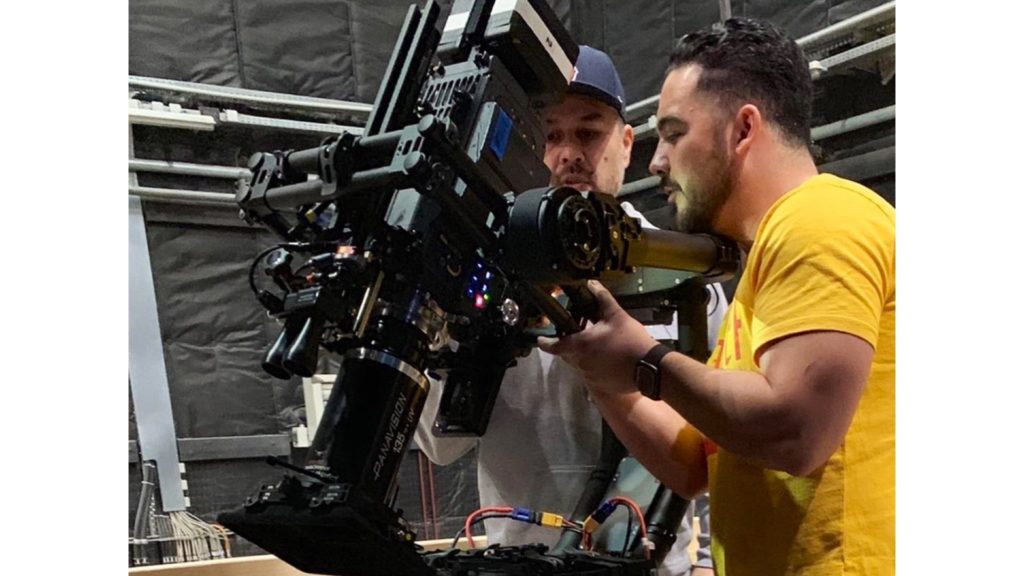
Solution: Shooting digital, transferring to 35mm film, then scanned back into digital
While Dune was shot digitally, it then transferred onto 35 mm film which was then scanned back into digital. Thus, the movie that you see in the theater has undergone a process of emulation. It was derived from a novel technique that was implemented for the first time in a commercial feature. “It was an involved process that hasn’t really happened before in commercial films,” Fraser explains. “But it gave us the feeling we had been picturing a certain texture that’s painterly but feels timeless…The film has softened the edges of the digital. It gave us something that film acquisition couldn’t give us, and it gave us something that digital acquisition couldn’t give us” Fraser elaborated to the Go Creative Show (watch the interview below):
Transferring digital film into 35mm
The process of creating prints from original negatives is a costly one. However, dedicated technologies allow the privilege of facilitating the process, making it more affordable. Established in 2014 CPC London is the only Film lab in the world that solely specializes in producing affordable 35mm motion picture film prints for filmmakers, Using two extremely rare film recorder units, they are able to transform raw data into a brand new 35mm print, complete with soundtrack and subtitles as required (even in 3D). For a 90-minute film, the process from receiving the raw data file to completing printing can take as little as four hours.
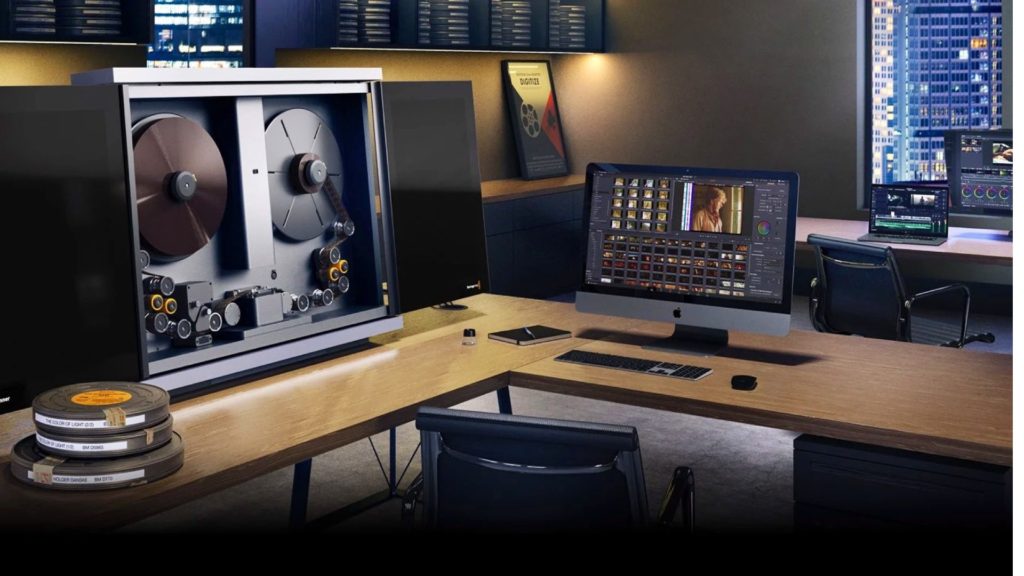
Watch a video that highlights the process:
Adding real grain (=emulation)
Here is an example of TrueGrain Scanning, which is a new technology that CPC London uses. As stated by CPC London: “Achieve the Authentic ‘Film’ Look by adding real grain and texture to your digital content without the need for any effects or filters! We can record your digital content on real 35mm motion picture film and re-scan back to digital to achieve the authentic ‘film’ look”. Watch the film below that implemented that methodology:
Final thoughts
At first, it seemed that the process applied on Dune was (is) a bit ‘Sisyphean’. Using digitally captured images printed into film and then scanned back seems like an unnecessarily complicated process. Why not just shoot on 35mm film directly, especially with a more than $150 million dollar budget? Nevertheless, Dune’s director and cinematographer have answered that. In most cases, when you are eager that your materials will look like the real thing (=film), you have many options like using film stock emulations. However, I’m not sure how those film emulators perform in the movie theaters. The process used on Dune allowed an imagery hybridization of analog and digital. Have you noticed that special look?


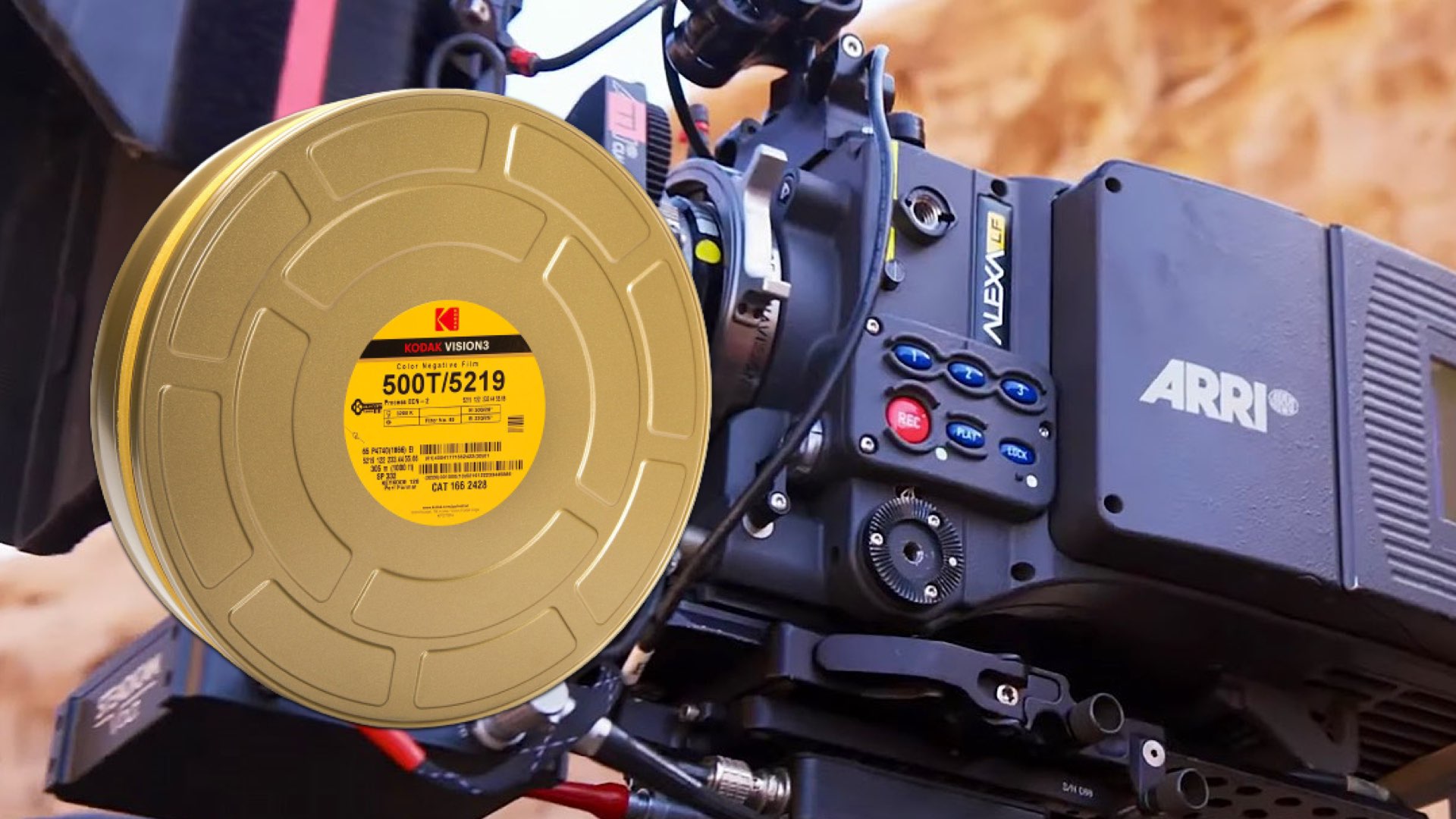


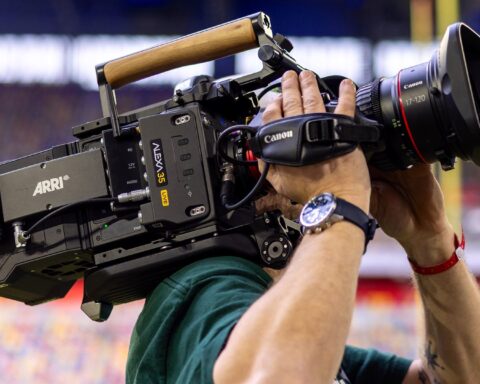
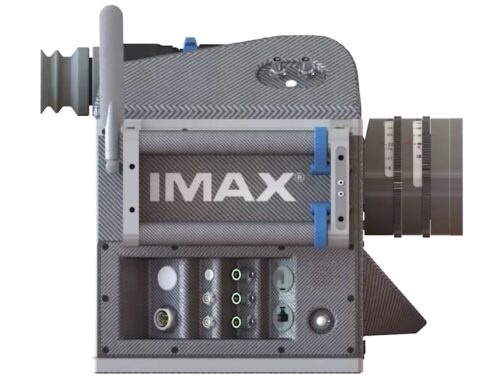



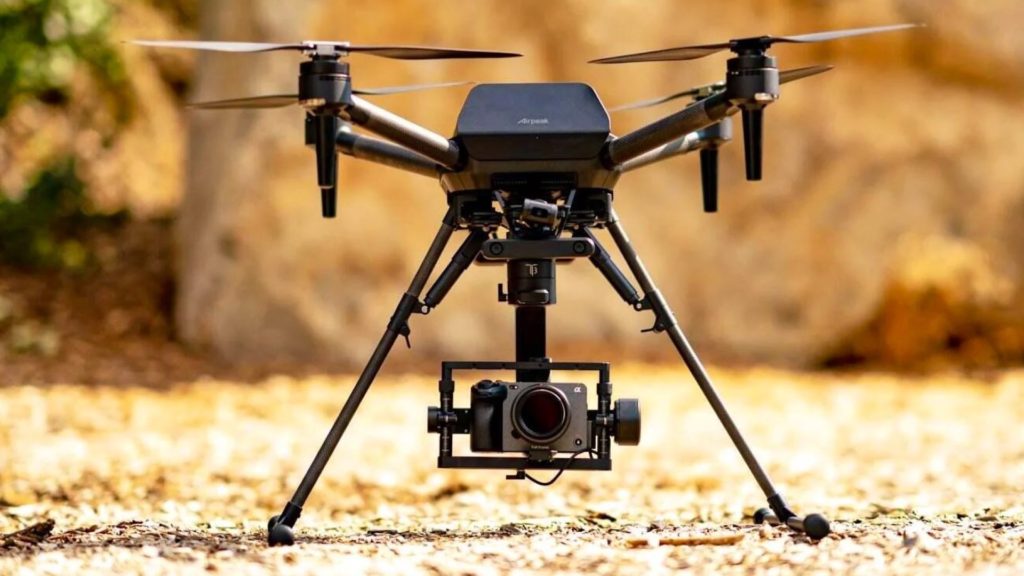
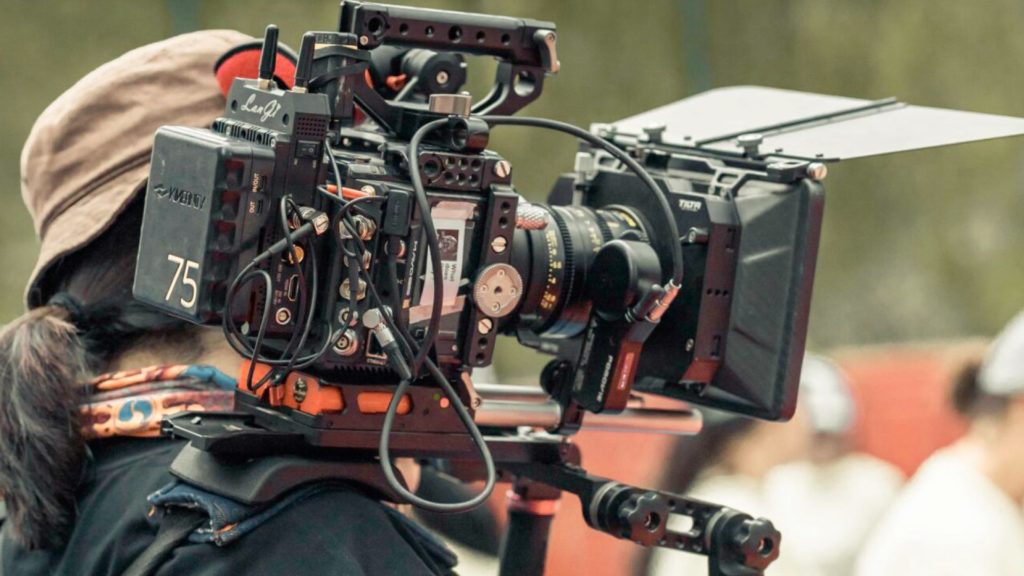



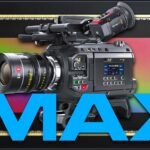
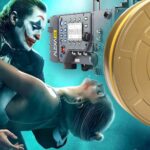
Of course this technique was previously used in the movie Guava Island.
I just don’t understand why they felt film looked “too nostalgic”. Film is an incredible format where you can get absolutely any look. Wes Anderson shoots his movies with a nostalgic feel that’s why hiğs films look like they were filmed in the 60s. Nolan’s movies look real modern and nothing like Wes Anderson’s.
You’re comparing apples to oranges my friend. Try comparing the new Dune to say, a recent Star Wars (i.e. Rogue 1)….there is a world of difference.
Plus, shooting digital first has so many pluses in post (production), which is what is required in both Dune and SW movies…
I remember when movies were actually good and nobody had to do tricks like this to gain few extra views. Complete gimmick and a joke in my opinion. Good article though.
Cinematographers have always done these kinds of “tricks” especially when they used to shoot on film. All professionals love playing with the medium it teaches them a lot about what’s possible. If you don’t endeavour to learn everything about your job then you can’t be the best at your job and who wants to employ a mediocre Cinematographer?
Oh and which emulsion….I detect a note of pear, charcoal, and more relaxed cellose fibers .. Of course, only grass fed prairie raised Bison hide for the gelatin binder and Peruvian mined pre conquest silver salts for the balanced, natural pre digital look I prefer.
What do you mean: Using two extremely rare film recorder units, they are able to transform raw data into a brand new 35mm print. ?
Hi Kas. We can print straight to positive 35mm motion picture film directly from a data source (DCP, DPX, ProRes, MPEG4). This process eliminates all stages involving expensive negative intermediates. Feel free to visit our website for more details, http://www.cpclondon.com/35mm-prints, or email us with your questions at office@cpclondon.com.
This sounds to me like the kind of thing those idiots buying gold plated HDMI connectors do. Spend a fucktonne of money when they could have just played with the film grain dial in after-effects or something.
And if it wasn’t real enough for them, they should have spent the millions of dollars wasting film, on the research to make a better quality digital filter, rather than fucking around with refilming a fucking digital movie only to redigitize it.
Calm down, lunatic. I think the best in the industry knows better than you,
Film recorders aren’t that rare. Only rare that they are hardly used anymore. There is almost always one for sale on eBay.
https://www.ebay.com/itm/281620966801?hash=item4191eaed91:g:l7oAAOSwr81URtax
It’s the equivalent of shooting E-6 (Ektachrome) or Kodachrome, scanning it at a higher resolution than a DSLR could do, then printing it in a magazine, just in “reverse”. Before DSLR sensors could do better than 1MP, room (slide, specifically) was the only way to get high enough resolution images useful for publication. I still believe that Kodachrome 64 is superior to an an FX fullfame sensor, even though they’re roughly the same size and supposedly equivalent.
But for cinema, 35mm is a step down from what an Arri or Red camera can capture in a raw format. In the transfer, they can “size” the original pixels to match the filmstock grain exactly, matching exactly what an original negative would look like straight from the camera. 35mm traditional prints are at least 3 or 4 steps removed from that original piece of film and ate never as good. Except when I worked freelance at a film to video/digital editing house in the ninties, I’ve never seen an original 35mm negative before, they’re too rare and valuable to remove from a vault.
And it was “The Adventures of Robin Hood” with Errol Flynn.” My GOD, I’ve never seen such a beautiful piece of film before.
Sounds like Film Convert with extra steps
Probably sounds ridiculous from an engineering mindset, but for a ‘creative’ it’s a typical idea. In music production, a common way to get a quick retro feel is to play back digital audio into a tape recorder and then play it back from the tape into digital interface. Its an “easy” and reliable way to get some of the nuances of an analogue medium while keeping the flexibility of digital.
However, I do think on such a big budget production, with possible sequels, a better investment could have been to develop their own film emulation. But anyway now they have the whole movie in both original digital and scanned 35mm digital, the engineer in me would love to try feeding in the image set as training data to a machine learning algorithm – 90 minutes is 129,600 frames. Should be enough data for some impressive results.
You can say what you want about the process they used. The end result, in my opinion what magnificent.
Analyse why they did it all you want, but it looks terrible. Plain and simple. The Alexa Mini LF is 4.5K resolution, 35MM is good for 1080p. Watch any UHD bluray remaster of a 35MM film and you will see that you need a minimum of 70mm film to get something approaching the sharpness of 4K resolution. So they scanned pristine 4.5K footage into an objectively inferior medium. No point in trying to justify that. C. Nolan and Q. Tarantino know how and why to use film, these amateurs not only do not know how to make a movie worth watching, their technical knowledge is not even up to scratch. Why do we even have a 4K standard when nobody respects it. 8K should be the standard by now, yet for some reason 2K/1080p is still acceptable. When I go to the cinema I want to get my moneys worth.
Wow, it’s truly fascinating to learn about the intricate process behind the cinematography of “Dune.” The decision to shoot on the ALEXA LF, transfer it to 35mm film, and then scan it back to digital is a remarkable blend of old and new techniques. This unique approach not only showcases the incredible advancements in digital cinematography but also pays homage to the timeless beauty and aesthetic of the film. The decision to shoot “Dune” on the ALEXA LF, transfer it to 35mm film, and then scan it back to digital is a testament to the dedication and artistry of the filmmakers. It showcases their commitment to pushing the boundaries of cinematography while honoring the timeless qualities of traditional filmmaking. I can’t wait to experience the breathtaking visuals and immerse myself in the world. Thanks for sharing. If you want to know about 35mm Cameras, Click here.
The process described for creating the visuals in Dune is truly remarkable. Combining cutting-edge digital technology with the timeless aesthetic of 35mm film brings a unique texture to the movie. This fusion of methods demonstrates a commitment to achieving a distinct visual identity.For more information related to this go with lifetimeheritagefilms.com.